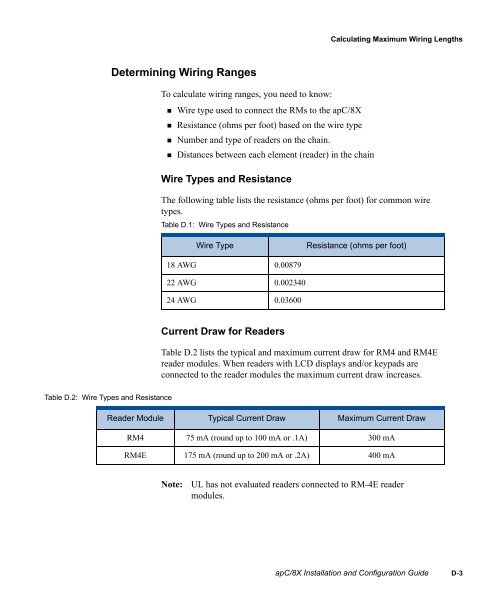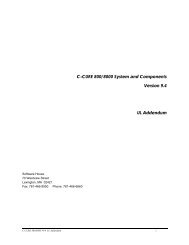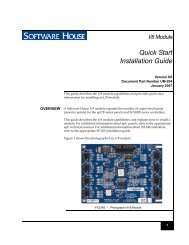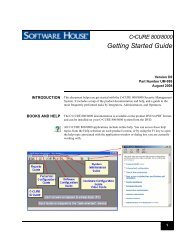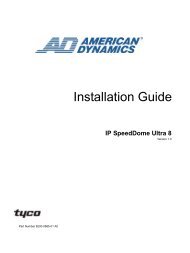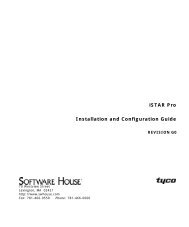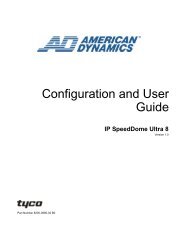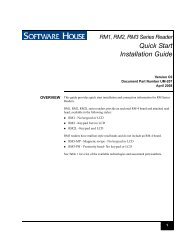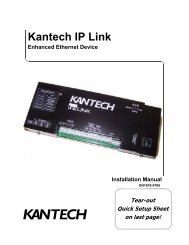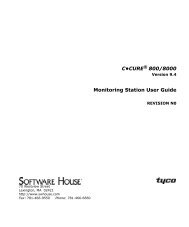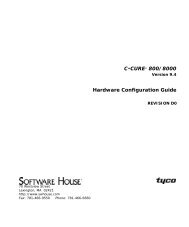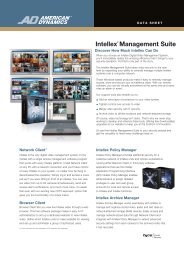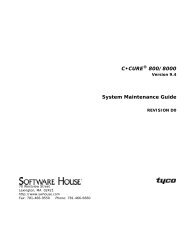Câ¢CURE® 800/8000 9.4 apC/8X Technical Manual - Tyco Security ...
Câ¢CURE® 800/8000 9.4 apC/8X Technical Manual - Tyco Security ...
Câ¢CURE® 800/8000 9.4 apC/8X Technical Manual - Tyco Security ...
You also want an ePaper? Increase the reach of your titles
YUMPU automatically turns print PDFs into web optimized ePapers that Google loves.
Calculating Maximum Wiring Lengths<br />
Determining Wiring Ranges<br />
To calculate wiring ranges, you need to know:<br />
• Wire type used to connect the RMs to the <strong>apC</strong>/<strong>8X</strong><br />
• Resistance (ohms per foot) based on the wire type<br />
• Number and type of readers on the chain.<br />
• Distances between each element (reader) in the chain<br />
Wire Types and Resistance<br />
The following table lists the resistance (ohms per foot) for common wire<br />
types.<br />
Table D.1: Wire Types and Resistance<br />
Wire Type<br />
Resistance (ohms per foot)<br />
18 AWG 0.00879<br />
22 AWG 0.002340<br />
24 AWG 0.03600<br />
Current Draw for Readers<br />
Table D.2 lists the typical and maximum current draw for RM4 and RM4E<br />
reader modules. When readers with LCD displays and/or keypads are<br />
connected to the reader modules the maximum current draw increases.<br />
Table D.2: Wire Types and Resistance<br />
Reader Module Typical Current Draw Maximum Current Draw<br />
RM4 75 mA (round up to 100 mA or .1A) 300 mA<br />
RM4E 175 mA (round up to 200 mA or .2A) 400 mA<br />
Note:<br />
UL has not evaluated readers connected to RM-4E reader<br />
modules.<br />
<strong>apC</strong>/<strong>8X</strong> Installation and Configuration Guide D-3


